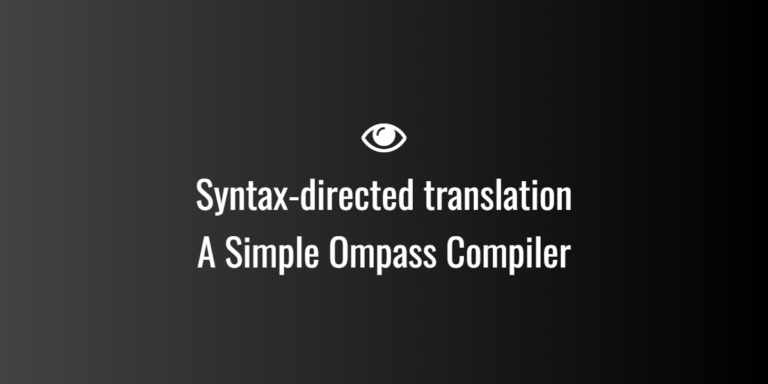
Software Testing
What is Software Testing?
Software Testing is the process of evaluating and verifying that a software application functions as expected. It ensures that the software meets requirements, is free from defects, and performs well under different conditions.
Software testing can be classified into Manual Testing and Automated Testing, and it includes different testing methodologies like Functional Testing, Non-Functional Testing, White Box Testing, and Black Box Testing.
Types of Software Testing
1️⃣ Functional Testing (Validates Software Features & Business Logic)
Functional testing checks whether the software works as expected by verifying its functions against the specified requirements.
1. Unit Testing
- Tests individual components (functions, methods, modules).
- Performed by developers using frameworks like JUnit, PyTest, NUnit.
- Example: Testing a “calculateTotalPrice()” function in an e-commerce app.
2. Integration Testing
- Tests interactions between integrated modules to ensure seamless communication.
- Example: Checking if the user login module correctly communicates with the database.
3. System Testing
- Evaluates the entire system to verify compliance with business requirements.
- Example: Testing an online banking system from login to fund transfer.
4. User Acceptance Testing (UAT)
- Conducted by end-users to verify if the software meets their needs.
- Example: A retail company tests an ERP system before final rollout.
5. Regression Testing
- Ensures new changes do not break existing functionality.
- Example: Running old test cases after adding a new search feature in a website.
6. Smoke Testing
- Quick tests on major functionalities before detailed testing.
- Example: Checking if a newly deployed web app loads properly.
7. Sanity Testing
- Focused checks on specific bug fixes or new features.
- Example: Verifying if a login issue reported by users has been fixed.
8. Alpha Testing
- Conducted by internal testers before external release.
- Example: Google’s internal employees test a new Gmail feature before the public release.
9. Beta Testing
- Conducted by real users in a controlled environment.
- Example: WhatsApp launches beta versions for early user feedback.
10. Black Box Testing
- Tests the system without knowing internal code structure.
- Example: Inputting valid and invalid login credentials and checking responses.
11. White Box Testing
- Tests the system with knowledge of internal code (e.g., paths, loops, conditions).
- Example: Checking if a “for loop” correctly iterates through user records.
12. Grey Box Testing
- Partially aware of the internal code and tests data flows between modules.
- Example: Checking if a checkout page correctly applies discounts and tax calculations.
13. Boundary Value Testing
- Tests extreme and edge values to check system stability.
- Example: Checking password validation with 0, 1, and max-length characters.
14. Equivalence Partitioning
- Divides inputs into valid and invalid partitions for efficient testing.
- Example: Testing an age input field with <18, 18-60, and >60 categories.
15. Decision Table Testing
- Uses tables to verify different input combinations and outputs.
- Example: Testing a loan approval system where multiple conditions apply.
16. Exploratory Testing
- Testers explore the software without predefined test cases.
- Example: A tester randomly navigates a new mobile app to find unexpected issues.
17. Ad-hoc Testing
- Unstructured testing done without documentation or formal planning.
- Example: Clicking random buttons on an application to check for crashes.
2️⃣ Non-Functional Testing (Checks Performance, Security & Usability)
Non-functional testing verifies how well the system performs under different conditions.
18. Performance Testing
- Measures system speed and responsiveness.
- Example: Checking if an online store can process 100 orders per second.
19. Load Testing
- Tests the system under expected traffic loads.
- Example: Simulating 10,000 concurrent users on a social media app.
20. Stress Testing
- Pushes the system beyond normal limits to find failure points.
- Example: Checking how a banking app behaves under extreme transactions.
21. Scalability Testing
- Evaluates how well the system scales as workload increases.
- Example: Can a cloud-based video platform handle 1 million users?
22. Volume Testing
- Tests performance with large datasets.
- Example: Checking if a database can handle 1TB of customer data.
23. Endurance (Soak) Testing
- Runs the system continuously to detect performance degradation over time.
- Example: Testing an e-commerce website for 48 hours under heavy traffic.
24. Security Testing
- Identifies vulnerabilities and threats.
- Example: Checking if a banking app encrypts user passwords correctly.
25. Penetration Testing
- Simulates cyber-attacks to test security defenses.
- Example: Ethical hackers try to break into a company’s web application.
26. Vulnerability Testing
- Scans for known security weaknesses.
- Example: Checking for outdated software versions in a system.
27. Usability Testing
- Ensures software is user-friendly and easy to navigate.
- Example: Testing if a travel booking website is easy to use.
28. Accessibility Testing
- Ensures compliance with standards for disabled users (WCAG, ADA).
- Example: Checking if a screen reader works on a government portal.
29. Compatibility Testing
- Ensures software runs on different browsers, OS, and devices.
- Example: Checking if a web app works on Chrome, Firefox, and Safari.
30. Recovery Testing
- Tests how quickly a system recovers after failure.
- Example: Testing if an airline booking system restores data after a crash.
3️⃣ Specialized Testing (Industry-Specific & Advanced Testing)
31. API Testing
- Ensures APIs return correct responses.
- Example: Checking if a weather API correctly returns temperature data.
32. Mobile Testing
- Tests apps on different screen sizes, networks, and OS versions.
- Example: Checking an Android app on Samsung, Pixel, and OnePlus.
33. Cloud Testing
- Ensures a system works properly in cloud environments (AWS, Azure).
34. IoT Testing
- Tests Internet of Things (IoT) devices and connectivity.
35. Blockchain Testing
- Ensures secure and accurate blockchain transactions.
36. AI/ML Testing
- Validates AI model predictions and accuracy.
37. ERP Testing
- Tests Enterprise Resource Planning (ERP) software like SAP, Oracle.
38. Data Warehouse Testing
- Ensures large-scale data storage and retrieval works efficiently.
39. ETL Testing
- Validates Extract, Transform, Load (ETL) data migration processes.
40. Chatbot Testing
- Ensures chatbots correctly understand and respond to queries.
Conclusion
Software testing is critical for ensuring reliability, security, and user satisfaction. Functional testing ensures correct operation, non-functional testing checks performance & security, and specialized testing applies to specific technologies.1️⃣ Functional Testing (Validates Software Features & Business Logic)
Functional testing checks whether the software works as expected by verifying its functions against the specified requirements.
1. Unit Testing
- Tests individual components (functions, methods, modules).
- Performed by developers using frameworks like JUnit, PyTest, NUnit.
- Example: Testing a “calculateTotalPrice()” function in an e-commerce app.
2. Integration Testing
- Tests interactions between integrated modules to ensure seamless communication.
- Example: Checking if the user login module correctly communicates with the database.
3. System Testing
- Evaluates the entire system to verify compliance with business requirements.
- Example: Testing an online banking system from login to fund transfer.
4. User Acceptance Testing (UAT)
- Conducted by end-users to verify if the software meets their needs.
- Example: A retail company tests an ERP system before final rollout.
5. Regression Testing
- Ensures new changes do not break existing functionality.
- Example: Running old test cases after adding a new search feature in a website.
6. Smoke Testing
- Quick tests on major functionalities before detailed testing.
- Example: Checking if a newly deployed web app loads properly.
7. Sanity Testing
- Focused checks on specific bug fixes or new features.
- Example: Verifying if a login issue reported by users has been fixed.
8. Alpha Testing
- Conducted by internal testers before external release.
- Example: Google’s internal employees test a new Gmail feature before the public release.
9. Beta Testing
- Conducted by real users in a controlled environment.
- Example: WhatsApp launches beta versions for early user feedback.
10. Black Box Testing
- Tests the system without knowing internal code structure.
- Example: Inputting valid and invalid login credentials and checking responses.
11. White Box Testing
- Tests the system with knowledge of internal code (e.g., paths, loops, conditions).
- Example: Checking if a “for loop” correctly iterates through user records.
12. Grey Box Testing
- Partially aware of the internal code and tests data flows between modules.
- Example: Checking if a checkout page correctly applies discounts and tax calculations.
13. Boundary Value Testing
- Tests extreme and edge values to check system stability.
- Example: Checking password validation with 0, 1, and max-length characters.
14. Equivalence Partitioning
- Divides inputs into valid and invalid partitions for efficient testing.
- Example: Testing an age input field with <18, 18-60, and >60 categories.
15. Decision Table Testing
- Uses tables to verify different input combinations and outputs.
- Example: Testing a loan approval system where multiple conditions apply.
16. Exploratory Testing
- Testers explore the software without predefined test cases.
- Example: A tester randomly navigates a new mobile app to find unexpected issues.
17. Ad-hoc Testing
- Unstructured testing done without documentation or formal planning.
- Example: Clicking random buttons on an application to check for crashes.
2️⃣ Non-Functional Testing (Checks Performance, Security & Usability)
Non-functional testing verifies how well the system performs under different conditions.
18. Performance Testing
- Measures system speed and responsiveness.
- Example: Checking if an online store can process 100 orders per second.
19. Load Testing
- Tests the system under expected traffic loads.
- Example: Simulating 10,000 concurrent users on a social media app.
20. Stress Testing
- Pushes the system beyond normal limits to find failure points.
- Example: Checking how a banking app behaves under extreme transactions.
21. Scalability Testing
- Evaluates how well the system scales as workload increases.
- Example: Can a cloud-based video platform handle 1 million users?
22. Volume Testing
- Tests performance with large datasets.
- Example: Checking if a database can handle 1TB of customer data.
23. Endurance (Soak) Testing
- Runs the system continuously to detect performance degradation over time.
- Example: Testing an e-commerce website for 48 hours under heavy traffic.
24. Security Testing
- Identifies vulnerabilities and threats.
- Example: Checking if a banking app encrypts user passwords correctly.
25. Penetration Testing
- Simulates cyber-attacks to test security defenses.
- Example: Ethical hackers try to break into a company’s web application.
26. Vulnerability Testing
- Scans for known security weaknesses.
- Example: Checking for outdated software versions in a system.
27. Usability Testing
- Ensures software is user-friendly and easy to navigate.
- Example: Testing if a travel booking website is easy to use.
28. Accessibility Testing
- Ensures compliance with standards for disabled users (WCAG, ADA).
- Example: Checking if a screen reader works on a government portal.
29. Compatibility Testing
- Ensures software runs on different browsers, OS, and devices.
- Example: Checking if a web app works on Chrome, Firefox, and Safari.
30. Recovery Testing
- Tests how quickly a system recovers after failure.
- Example: Testing if an airline booking system restores data after a crash.
3️⃣ Specialized Testing (Industry-Specific & Advanced Testing)
31. API Testing
- Ensures APIs return correct responses.
- Example: Checking if a weather API correctly returns temperature data.
32. Mobile Testing
- Tests apps on different screen sizes, networks, and OS versions.
- Example: Checking an Android app on Samsung, Pixel, and OnePlus.
33. Cloud Testing
- Ensures a system works properly in cloud environments (AWS, Azure).
34. IoT Testing
- Tests Internet of Things (IoT) devices and connectivity.
35. Blockchain Testing
- Ensures secure and accurate blockchain transactions.
36. AI/ML Testing
- Validates AI model predictions and accuracy.
37. ERP Testing
- Tests Enterprise Resource Planning (ERP) software like SAP, Oracle.
38. Data Warehouse Testing
- Ensures large-scale data storage and retrieval works efficiently.
39. ETL Testing
- Validates Extract, Transform, Load (ETL) data migration processes.
40. Chatbot Testing
- Ensures chatbots correctly understand and respond to queries.
Conclusion
Software testing is critical for ensuring reliability, security, and user satisfaction. Functional testing ensures correct operation, non-functional testing checks performance & security, and specialized testing applies to specific technologies.






